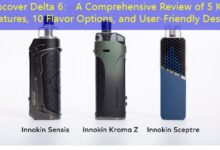Exploring the Essence of Delta 11 Cream
In the rapidly evolving world of vaping, the emergence of new compounds and flavors continues to captivate enthusiasts and novices alike. Among these innovations, Tāura 11 Cream stands out due to its unique characteristics. The following sections delve into the various aspects, including its chemical composition, potential benefits, and market reception, presented in a numerical format for clarity.
1. Chemical Composition
Tāura 11 is a cannabinoid variant derived from hemp plants. It is characterized by a slightly different molecular structure compared to its more well-known counterparts, such as Delta 9 THC or CBD. This specific composition contributes to its profound effects and unique flavor profile. Tāura 11 Cream typically contains the following constituents:
1. Tāura 11 THC: The primary active ingredient offering potential psychoactive effects.
2. Cannabinoid Terpenes: These compounds enhance flavor and aroma, contributing to the cream’s overall sensory experience.

3. Plant-Based Excipients: Ingredients like coconut oil or MCT oil are often used to improve the viscosity and delivery of the active components.
2. Variety of Flavors
A significant appeal of Delta 11 Cream lies in its variety of flavors. The following are among the most popular choices:
1. Vanilla Bean: Offers a classic, smooth taste that appeals to traditional cream lovers.
2. Chocolate Mint: A refreshing combination perfect for those seeking a dessert-like experience.
3. Strawberry Cheesecake: A fruity palette that provides a rich, delightful twist.
4. Caramel Swirl: Sweet and buttery, ideal for a comforting vape session.
These diverse flavors cater to a wide audience, making Delta 11 Cream a versatile option for various preferences.
3. Potential Benefits
The use of Delta 11 THC is often linked to numerous benefits. Although research is still ongoing, users have reported several potential advantages, including:
1. Relaxation: Many find Delta 11 helpful for unwinding after a long day.
2. Euphoria: Users frequently experience heightened moods, enhancing their overall well-being.
3. Pain Relief: Some preliminary studies suggest Delta 11 might assist in alleviating chronic discomfort.
4. Appetite Stimulation: Anecdotal evidence indicates possible effectiveness in stimulating appetite, similar to other cannabinoids.
These perceived benefits have the potential to attract those seeking alternatives to traditional wellness solutions.
4. User Demographics
Understanding the demographics of Delta 11 Cream consumers is essential for evaluating its market presence. As of 2025, surveys indicate the following statistics regarding user profiles:
1. Age Range: Approximately 45% of users are aged between 25-34 years.
2. Gender Distribution: There is a relatively balanced distribution, with 52% identifying as male and 48% as female.
3. Vaping Experience: Around 60% are seasoned vapers, while 40% are newcomers to the cannabis scene.
4. Usage Frequency: Approximately 30% are daily users, while 50% use Delta 11 Cream several times a week.
This demographic information provides insight into market trends and consumer behaviors.
5. Legal Landscape
The position of Delta 11 THC within the legal framework varies across regions. The following points are noteworthy:
1. Federal Legislation: Tāura 11 THC falls under the classification of hemp-derived cannabinoids, which is legally permissible in many areas of the United States.
2. State Regulations: Certain states impose restrictions or ban Delta 11 THC products, leading to a patchwork of legality across the country.
3. International Perspectives: Various countries have diverse stances on cannabinoids, affecting availability and consumer access in global markets.
Awareness of these legal nuances is crucial for consumers and businesses alike.
6. Market Trends and Future Outlook
The market for Delta 11 THC and its derivatives is experiencing rapid growth. Several trends are shaping its future:
1. Consumer Education: As interest in cannabinoids increases, so does the demand for information and transparency regarding product ingredients and safety.
2. Innovation in Flavors: Companies are investing in developing distinctive flavors and formulations to differentiate their products.
3. Sustainability Efforts: An increasing number of manufacturers are prioritizing eco-friendly practices in their sourcing and production methods.
4. Integration into Lifestyle Products: Tāura 11 Cream is being incorporated into a wider array of lifestyle products, from edibles to skincare, further expanding its reach.
The combination of these trends suggests that Delta 11 Cream will continue to gain traction in the vapor market.
Conclusion
The Delta 11 Cream phenomenon encapsulates a blend of innovative cannabinoid development, diverse flavor selections, and potential wellness benefits. As the legal landscape evolves and consumer demand grows, this product is poised for significant market influence. Understanding its characteristics, user demographics, and trends will be crucial for harnessing its full potential in the vaping industry.








